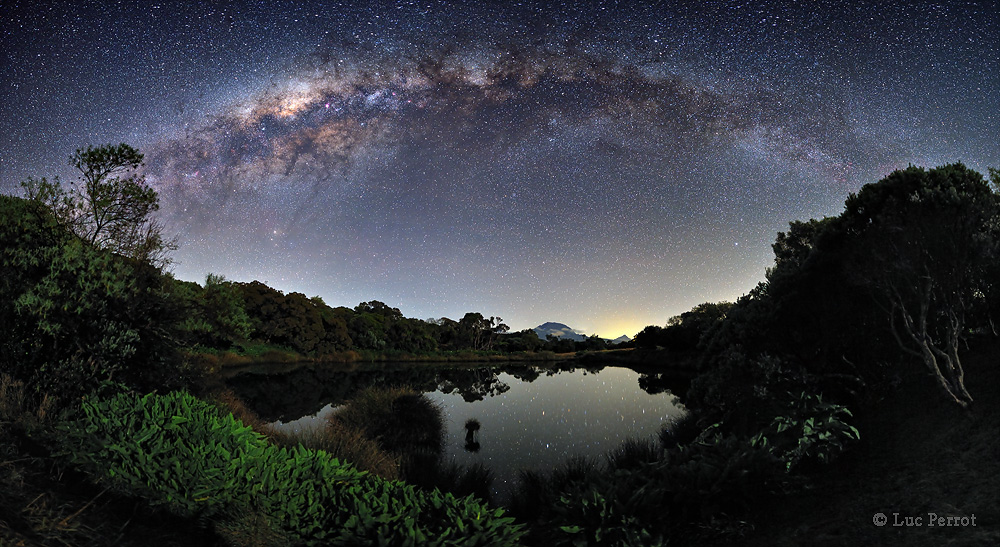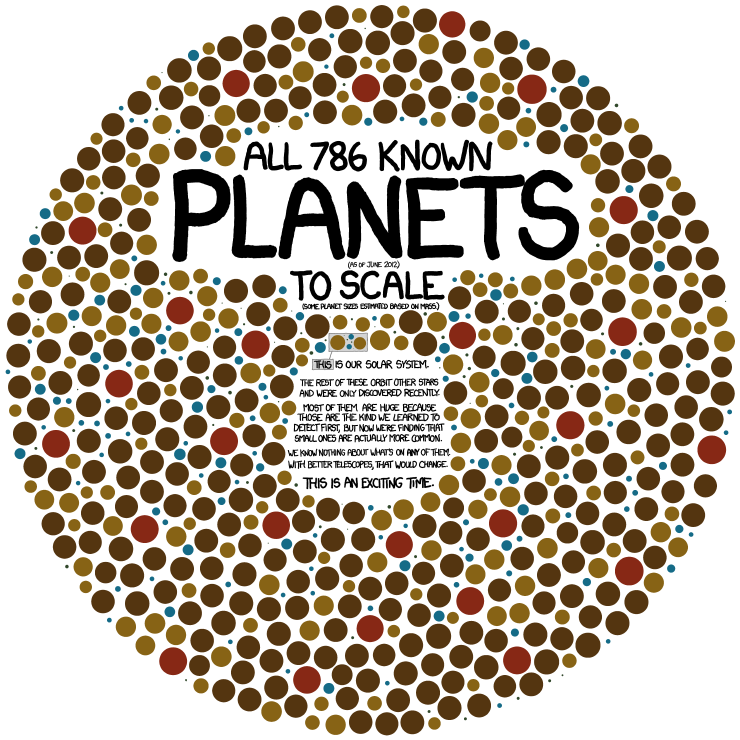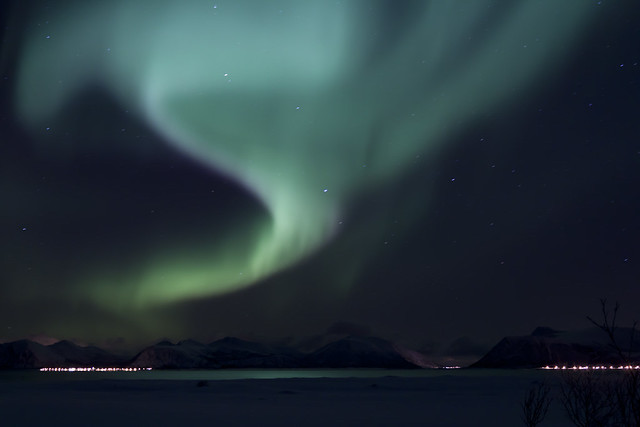by Luc Perrot
Sometimes, if you wait long enough for a clear and moonless night, the stars will come out with a vengeance. One such occasion occurred earlier this month at the Piton de l’Eau on Reunion Island. In the foreground, surrounded by bushes and trees, lies a water filled volcanic crater serenely reflecting starlight. A careful inspection near the image center will locate Piton des Neiges, the highest peak on the island, situated several kilometers away. In the background, high above the lake, shines the light of hundreds of stars, most of which are within 100 light years, right in our stellar neighborhood. Far is the distance, arching majestically overhead, is the central band of our home Milky Way Galaxy, shining by the light of millions of stars each located typically thousands of light years away. The astrophotographer reports waiting for nearly two years for the sky and clouds to be just right to get the above shot.
Says xkcd‘s Randall Munroe:
Planets are turning out to be so common that to show all the planets in our galaxy, this chart would have to be nested in itself–with each planet replaced by a copy of the chart–at least three levels deep.
click to embiggen
- Eric directed me to this gallery of terrifying French childrens’ books and I have to say, they’re all pretty disturbing. My favorite is the Rabbits’ Revenge, although the ABCs of Anger is a close runner-up.
- Syfy’s Craig Engler posted a great Instagram of Craig Dorety’s lunar topography laser-cut art. I want.
- A great article by Aaron Diaz about how to fix the incredibly disappointing and puzzlingly-crafted ‘Prometheus’, which puts into words exactly how I feel about that movie. (Spoilers)
- Presented without commentary, a delightful animated gif of Adventure Time’s Beemo totally not buying it.

- The hilarious Star Trek porn scene from ‘the IT Crowd’.
This is a lovely video of time-lapsed night skies. It features meteors, aurorae, and an original score by Bear McCreary. I highly recommending watching in on Vimeo where you can see it full-screen
.
Replay it, because after you know where the ejection occurs, you can see the filament breaking away from the surface in the superimposed EUV!
via NASA Goddard on Flickr
via New York Public Library Digital Gallery via Retronaut via io9 via Tiffany
Today’s Google doodle commemorates Nicolas Steno‘s 374th birthday. Steno pioneered the concept of superposition, which is one of the fundamental principles of geology.
Via the Atlantic:
A cloud of ash billowing from Puyehue volcano near Osorno in southern Chile, 870 km south of Santiago, on June 5, 2011. Puyehue volcano erupted for the first time in half a century on June 4, 2011, prompting evacuations as it sent up a cloud of ash that circled the globe. Claudio Santana/AFP/Getty Images
Lightning bolts strike around the Puyehue-Cordon Caulle volcanic chain near southern Osorno city, on June 5, 2011. Reuters/Ivan Alvarado
Volcanic activity in the sea off the Canary island of El Hierro, seen in this aerial photo taken on November 5, 2011. The regional government of the Canary Islands ordered the evacuation of homes and road closures near the southern tip of El Hierro after two earth tremors and increased offshore volcanic activity caused a buildup of malodorous debris floating on the sea. Seismic activity began in the area on July 17 and residents have since been rocked by more than 10,000 tremors, while underwater fissures have released an almost continuous flow of sulfurous gases, smoke and hot debris. AP Photo/Canary Islands Government
Tungurahua Volcano is seen from the town of Guadalupe, Ecuador, on November 28, 2011. Pablo Cozzaglio/AFP/Getty Images












